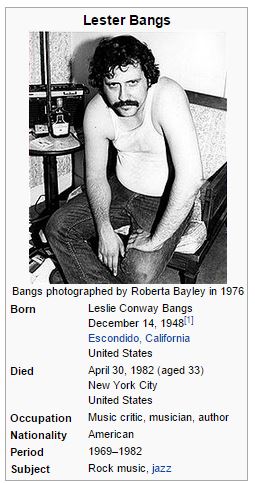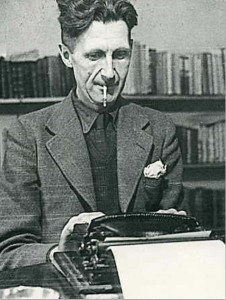
The essential guide to writing a compelling article
‘The First line is the most important. Use the most interesting or shocking fact. The more dramatic the better’ is one of Mike Nutley’s Key Rules to use when writing.

Mike Nutley
Mike is the ex Editor of New Media Age and has nearly 30 years of B2B Journalism. He shared with the Grafform team some practical advice on writing.
When Blogging, Mike stressed: Have a “Personal Voice” and try to get the Real You across.
With Journalism – the simple elements are:
- Get the Story
- Tell The Facts
- Less about the writer

Mike mentioned Lester Bangs who was a famous Rock journalist who wrote in his own unique style which was radical and often critical, as apparent in this quote:
“Well basically I just started out to lead [an interview] with the most insulting question I could think of. Because it seemed to me that the whole thing of interviewing as far as rock stars and that was just such a suck-up. It was groveling obeisance to people who weren’t that special, really. It’s just a guy, just another person, so what?”
Bangs was often quoted as the best American writer of his genre in this period.
Questions to think about when writing:
Question 1) What do you want the reader to think? Or what do you want them to do after reading?
Question 2) Who is the reader? Think about what else they read (The Sun, The Telegraph)?
Question 3) How do they consume what they read? (In print, on a PC or tablet)
Question 4) Why are they reading this? For fun, for work, for interest?
Rule 1)
The First line is the most important.Use most interesting / shocking fact. The more dramatic the better
Note that Quotes are hard to lead with (they must be really strong to lead with.)
Simplicity is better than complexity (KISS -Keep It Simple Stupid). Ideally short and relevant.
Rule 2)
The headline is your promise to the reader. You must deliver on this promise in the first paragraph.
Tips
Plan your article:
How many paragraphs are you aiming for?
Add a point or aim to each paragraph. It is easier to layout the content this way, take the reader on a journey and show them you have thought about it.
- Write shorter paragraphs.
- If you can use a shorter or simpler word, do it.
- Never start with a subordinate clause.
Mike also referred to George Orwell’s rules for writing…
 George Orwell’s rules:
George Orwell’s rules:
i) Never use a metaphor, simile, or other figure of speech which you are used to seeing in print.
ii) Never use a long word where a short one will do.
iii) If it is possible to cut a word out, always cut it out.
iv) Never use the passive where you can use the active.
v) Never use a foreign phrase, a scientific word, or a jargon word if you can think of an everyday English equivalent.
vi) Break any of these rules sooner than say anything outright barbarous.
[From Politics And The English Language]The Day to Day feel is set by sub editors, who control tone of a magazine. Often the headline title or caption will be decided by sub editors, and they are the first people who edit the description and cross heads and teasers.
There is no point writing unless you want it to be read. Questions to ask before writing:
- Who am i writing for (who is the audience)?
- what do they want from me?
- what do i want them to do when they finish writing
A good question is to ask, ‘What Else Do Your Readers Read?’ What are they used to in style, length, information, topics. This can assist in making judgements about content and style.
Never give people an excuse to stop reading – It should be like being on a train – the story should carry you seamlessly to the end.
- Make your writing as clear as possible – Simple sentences instead of the over complicated. Keep it short and succinct. Use variety to keep people interested – shorter sentences and paragraphs is the main aim but very with longer sentences and paragraphs.
- A paragraph is a unit of thought – NOT a unit of length – Make the point in the paragraph and move on at the end of the idea. Every paragraph is as long as it need to be (not longer).
It is much better to write something that works. You may have to kill some details (even if seem important) to create a great piece. Pick the important things that people say and link them together.
Brilliant for Blogs
Say the most outrageous thing then back it up with your article.
What’s your common thread? What’s the narrative?
When you find that you can write the blog piece around that, any extra information can be shared on another platform (like Twitter)
- Create an argument, a narrative thread and decide on what your plan is to tell it
Before you start to write…
Sit down and create a plan i.e. this is the argument I want to make.
Intro - What is this about
List points you are going to make
Is there a common theme I can link these together by?
Intro’s are important – sets up your argument in 28 words.
It sets up the tone for the piece. It has to be short (around 28 words) Tell them what you’re going to tell them.
A good headline and standfirst will come from the intro (Read David Foster Wallis)
A good writer might do a ‘delayed drop’ i.e. introduce the theme after the first paragraph – but must be a good writer to pull this off and keep the readers attention. Easier to encapsulate the main theme in intro.
Intro Tell them what you’re going to tell them
Article Tell them
End/ Wrap UpTell them what you told them
If you can include a Box for extra info – or a footnote about something else
BUT DO NOT take them out of the read path. Don’t lose the people on, never force them to re-read your words.
Always look for the weak spot yourself, YOU WILL KNOW what is the weakest.
Teaser
Short, punch, as interesting as possible. It’s only purpose is to make the reader read the first paragraph. If it doesn’t do this – START AGAIN – the only point of writing is to be read.
If your teaser is weak people won’t read your article so you will be wasting your time.
Don’t make it a question unless you feel there is no other option.
Write in a passive voice.
Never start with a subordinate clause.
The more conversational you can be the better. If you can make it conversational, people are more likely to follow till the end.
Eg. “Do you know the concept of a killer app, it is…” versus “Everybody knows the concept of the killer app that is…”
Headlines, Standfirsts, Cross heads, teaser – The only job is to get the person to read the first paragraph, the copy.
A great tragedy – Is that todays headlines have to rank on Google – to get readers. So they
need to include keywords. Again keep it simple, to the point and engaging.
Tell the story simply, clearly
Read Path
Consider how you are going to get people’s attention to read the article. Where do they look first, what’s a hook to get them to read the copy?
- The Teaser, Stand First and Quotes can be larger and get people’s attention.
- Keep the meaning to get them to read the copy.
- Cross Heads can be puns, song titles, puns on song titles.
- Cross Heads are introducing white space on the page
Endings
Do not write “In conclusion”
It’s acceptable to end on a relevant quote.
Review – It’s ok to write the “article” then compose the intro and ending.

Recent Comments